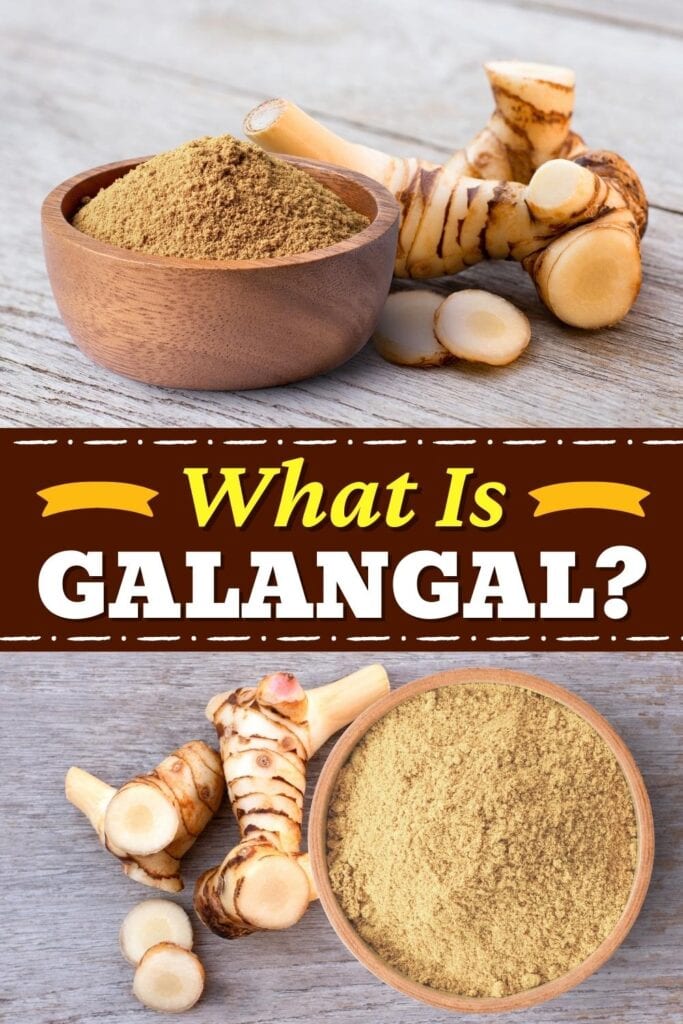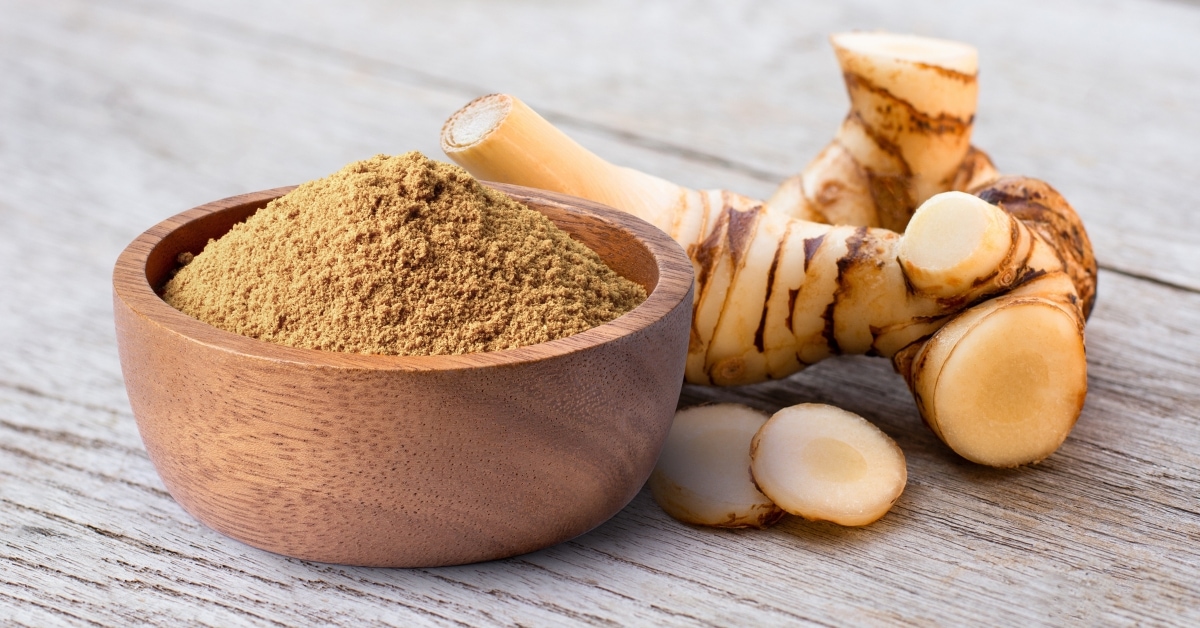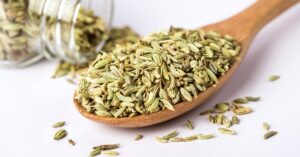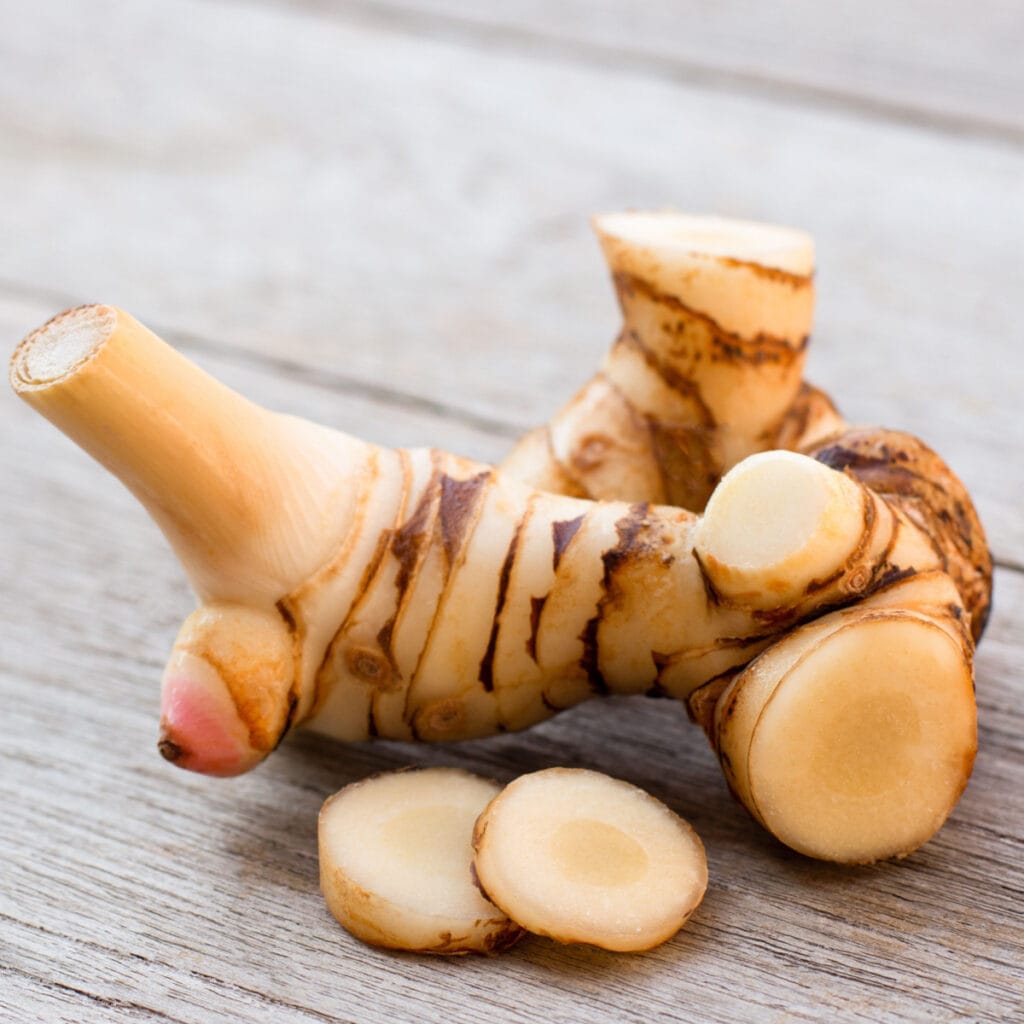
If you’re a fan of Thai or Indonesian cuisine, chances are you’ve already tasted this aromatic spice. But what is galangal?
Galangal is a staple in Southeast Asian cuisine. It’s used in curries, stir-fries, soups, and stews.
Just a tiny amount of galangal can elevate a dish from “meh” to “wow” in seconds!
This zesty spice adds a whole new dimension to any recipe, bringing its unique, piney flavor to the forefront.
Galangal is like a magician in the kitchen. It can transform boring dishes into exotic and exciting culinary adventures!
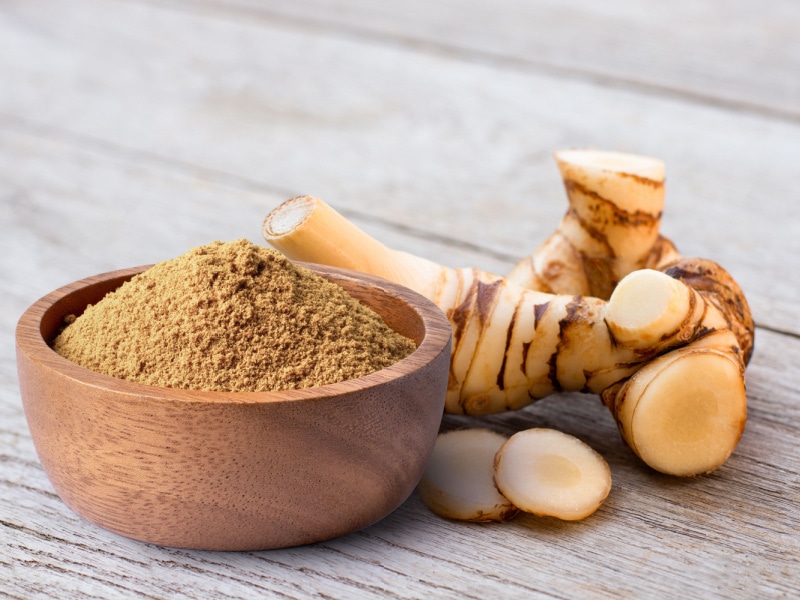
What Is Galangal?
Galangal is a root that belongs to the ginger family and is commonly used in Southeast Asian cuisine.
Ginger and galangal may look alike, but they have their own quirks.
Galangal has a thin, tube-like skin that branches off into nodes, making it one-of-a-kind.
It’s known for its pungent and slightly sweet taste and is often used in curries, soups, and stir-fry dishes.
So, how do you use galangal in your cooking?
First, you need to peel off the tough outer layer using a sharp knife or vegetable peeler.
Then, you can chop or grate the galangal and add it to your dish.
Galangal is usually used in small quantities, as its flavor can be quite overpowering if you use too much.
You can find it in the cuisines of many countries, from Cambodia and Thailand to Indonesia and Malaysia.
So, the next time you’re feeling adventurous in the kitchen, don’t be afraid to add some galangal to your dishes.
It might look like ginger’s cousin, but it has a personality all of its own.
What Does Galangal Taste Like?
Galangal has a distinct and slightly sweet aroma.
When you first take a whiff, you’re hit with this incredible woodsy aroma.
But then, when you take a bite of it, things get a bit interesting.
Chewing on galangal is not for the faint of heart.
It’s tough, bitter, and so pungent that it’ll knock your socks off.
But here’s the thing: you don’t actually eat galangal.
It’s used for its aroma, which infuses dishes with that incredible piney scent.
Because galangal is so tough, it needs to be pounded into a paste or chopped up really finely to be used in cooking.
When you do use it, you’ll notice that it has a sharp, citrusy, and pine-like flavor with a hint of pepper and ginger.
It’s pretty earthy and slightly bitter, which helps balance out its natural sweetness.
While it’s not as spicy as ginger, it does have a subtle heat that lingers on your tongue.
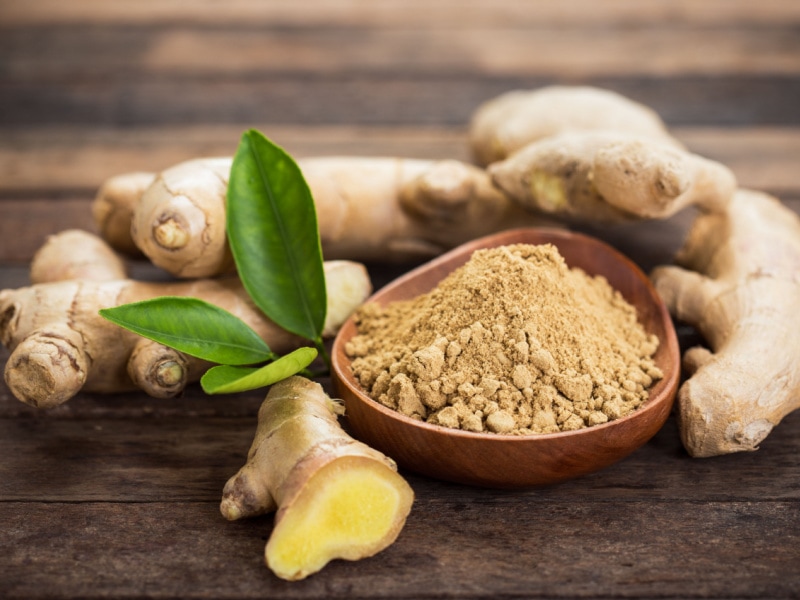
Galangal vs. Ginger (What’s the Difference?)
Are you confused about the difference between galangal and ginger? You’re not alone!
These two root plants might look similar at first glance, but they have some distinct differences.
Galangal is often used in Southeast Asian cuisine, while ginger is a common ingredient in many dishes from around the world.
When it comes to appearance, galangal has smoother skin and is typically larger than ginger.
But the real difference is in the taste.
Galangal has a more complex and earthy flavor profile compared to ginger.
While ginger is spicy and slightly sweet, galangal has a subtle heat that’s balanced out by its bitterness and pine-like flavor.
Ginger can be used fresh, dried, or powdered and is commonly used in baked goods, drinks, and savory dishes.
Galangal, on the other hand, is mostly used for its aroma and flavor.
It’s often pounded into a paste or chopped finely and added to curries, soups, and stir-fries.
Varieties of Galangal
There are several varieties of galangal that you can use in your cooking.
First up, we have lesser galangal which originated in China.
This one has a peppery and tangy flavor compared to the other types.
Then there’s greater galangal, which grows in Indonesia, particularly on the island of Java.
It has a more subtle taste and is often used in Indonesian cuisine.
Lastly, we have light galangal, which comes from southeast India’s Eastern Archipelago.
This one has a flavor profile that’s closer to true ginger.
Out of the three varieties, lesser galangal is the most commonly used and easiest to find.
It’s a staple ingredient in Thai and Chinese cuisine and is often used in curries and stir-fries.
Whole Vs. Ground
Just like with most spices, you can find galangal as either a whole root or ground up into a powder.
If you’re using dried galangal, you’ll likely come across it in a few different forms such as slices, chips, or powder.
You can even find galangal paste in some specialty Asian grocery stores.
If you ever need to replace fresh galangal in a recipe, you can use one teaspoon of dried galangal for every inch of fresh galangal you need.
But here’s the thing: the ground version can vary in type and concentration.
So, you might have to adjust the amount to get the taste just right. Hope that helps!
Cooking With Galangal
There are a few different ways to prep galangal for cooking.
First, you can thinly slice the root and steep it in a liquid for soups. You can just discard them before serving.
Another option is to finely mince the galangal and add it to a salad or salad dressing.
This way, you can enjoy the flavor without having to worry about biting into any tough pieces.
Lastly, you can grind the galangal by itself or with other herbs and spices to make a paste for curries.
This is a great way to infuse your dish with that delicious galangal flavor.
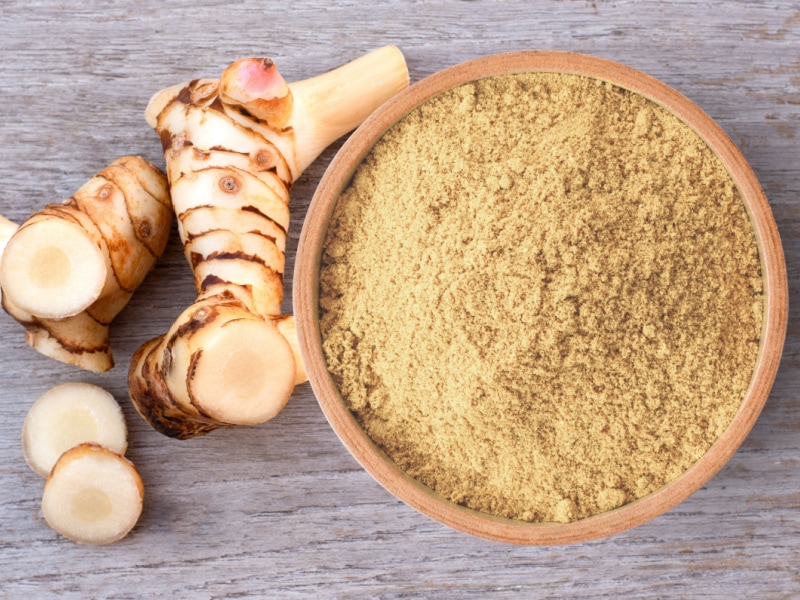
Where to Buy Galangal
If you’re on the hunt for galangal, you might be wondering where to find it.
The best place to start is at an Asian market, especially one that specializes in Southeast Asian ingredients.
Galangal isn’t a common spice in American cooking.
So, you might not have much luck finding it at your local grocery store.
Some specialty shops may carry it in powdered form in bags or spice jars, but fresh galangal is a bit harder to come by.
If you can’t find fresh galangal in stores near you, don’t worry!
You can also source it online and have it shipped directly to your door.
How to Store
If you have fresh galangal, it’s important to store it properly to be sure it lasts as long as possible.
One way to do this is by putting it in a loosely sealed plastic bag lined with a paper towel.
Then, just stick it in the refrigerator.
This can keep your galangal fresh for up to three weeks.
You can also slice the root into thin pieces and freeze it in a plastic bag for up to 2 months.
When it comes to dehydrated or dried galangal, you won’t need to worry as much about refrigeration.
Just make sure you store it in a cool, dry place.
Ground galangal powder can be kept in an air-tight container in your pantry for about 6 months to a year.

Galangal Substitutes
Ginger might look and taste similar to galangal.
But it’s not a good substitute because it has a much stronger and sharper taste, which can completely change the flavor of your dish.
Your best bet for substituting fresh galangal is to use frozen, dehydrated, or powdered galangal.
While none of these options will have the exact same taste as fresh galangal, they can still add a similar flavor profile to your dish.
One thing to keep in mind is that powdered galangal isn’t a great substitute in soups, as it can create a muddy texture.
Instead, use the powdered form in curries or baked goods.
